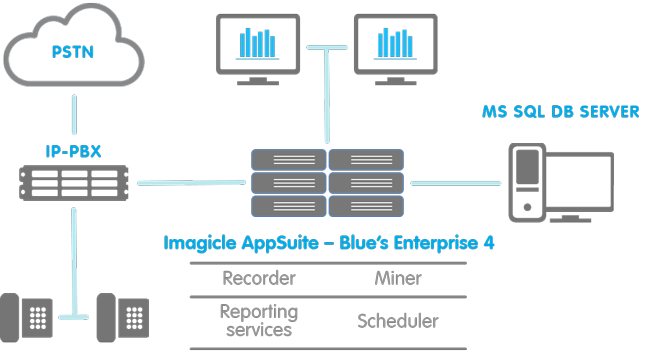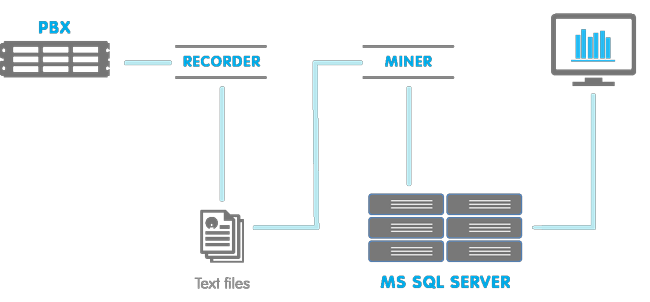Description and Architecture
Imagicle Billing is the ideal solution for the analysis and the accounting of the telephony traffic of your PBX. It is applicable to midsized companies as well as large enterprises.
It's easy to use, multicarrier, multicurrency and fast to deploy. Thanks to Imagicle Billing, both single site and multi site companies will be able to centrally report and manage telephone statistics and traffic.
Imagicle Billing is based on a Microsoft® SQL Server database, thus granting maximum security with high level performance even when archives reach millions of entries.
Imagicle Billing automatically organizes data into tables, produces preconfigured statistics and, thanks to the dashboard, provides ready to use access to the needed data.
Scheduled Reports and alarms are available to send email concerning information, costs, use, efficiency, proper functioning and more, to help administrators, supervisors and users to get the needed information automatically.
Note: mixed (multi -pbx) environments are supported by adding additional drivers on project basis
Architecture
Imagicle Billing is a software only product that can be installed on a server running a Microsoft Operating System.
Imagicle Billing interacts with the PBX through a specific connector (called driver). The connector handles the PBX legacy communication protocol, which can be network based or wired.
Imagicle Billing processes the call data received from the PBX, calculates the costs and stores the data in a Microsoft SQL database.
Once the calls have been processed, Imagicle Billing makes them available to the web interface, integrated in the Application Suite, allowing many kind of reports, dashboard, alarms.
Imagicle Billing supports a large number of connectors and PBX models. Please check the web site for updated information.

Imagicle Billing processes the calls with these independent steps:
The call data is received fromt the PBX. The PBX is monitored by a service (Recorder) which collects the data and stores it in text files with a standard format. A second service (called Miner) reads the files, calculates call costs and stores the result in the database. Once the calls are written into the database, reports can be directly generated or scheduled through the web interface.

|
||
| This article was: |
| Prev | Next | |
| Administration Guide | Installation and Configuration |
